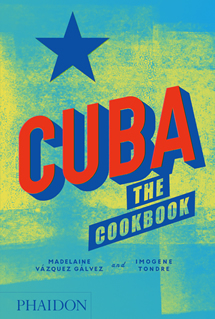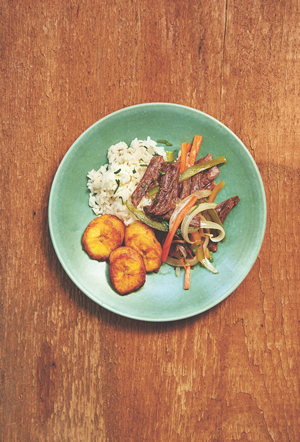By Christine Salins
Cuba is flavour of the month right now, with an increasing number of tourists putting it on their travel agendas. It’s fitting then that Phaidon should add a title on Cuba to its excellent series highlighting country-specific cuisine.
 Cuba: The Cookbook (Phaidon, $59.99) documents and celebrates the cuisine of one of the world’s most interesting and diverse nations.
Cuba: The Cookbook (Phaidon, $59.99) documents and celebrates the cuisine of one of the world’s most interesting and diverse nations.
Two of the country’s leading culinary experts, Madelaine Vazquez Galvez and Imogene Tondre, have put a huge amount of research into this massive tome, producing home-style recipes reflecting the Caribbean island’s culinary history and presenting them in a historical context.
Cuban food has been influenced by many waves of colonization and immigration, from the Spanish who gave them pork, bean soups and stews, to African slaves who brought yams, plantains, taro root and okra. Then there were the French settlers fleeing the Haitian revolution who founded coffee plantations, and the Chinese who began arriving from 1847 as indentured servants, who were key in making rice the staple of the Cuban diet.
Rationing and trade embargos over the past few decades took a toll on the country’s gastronomic scene but it is currently undergoing a revitalisation with hundreds of privately owned restaurants springing up everywhere. Galvez herself owns a restaurant there, in addition to authoring several Cuban cookbooks, hosting a cooking show and leading Slow Food Caribbean.
The authors concede that Cuban food has not won many favours with foreign visitors but they feel sure that if people had the opportunity to enjoy more home-cooked meals they would look on it differently.
The recipe here, which has its origins in Spain, is considered a classic Cuban dish and is very popular served with an avocado salad and white rice, black beans, tostones (fried green plantains) or fried sweet plantains.
For anyone who has been to Cuba or dreams of going there, this lovely compendium of recipes for appetizers, rice dishes, fish, meat, vegetables, egg dishes, and desserts, is highly recommended.
 SHREDDED BEEF
SHREDDED BEEF
(Ropa vieja)
Serves 4
800g beef skirt steak (bavette), cut into large pieces
2 bay leaves
2 medium white onions (1½ sliced and ½ left whole)
3 cloves garlic (1 whole and 2 cloves crushed)
1 sprig parsley, finely chopped
½ teaspoon dried oregano
½ teaspoon ground black pepper
2 tablespoons olive oil
1 small carrot, sliced
1 red bell pepper, thinly sliced
1 green bell pepper, thinly sliced
1 chive, finely chopped
1 teaspoon paprika
½ teaspoon ground cumin
Salt
1/3 cup dry white wine
In a medium pot, bring 6 cups of water to a boil. Add the meat and cook, skimming the foam from the surface, until tender, about 1 hour. After removing the foam two or three times, add 1 of the bay leaves, the ½ onion, the whole garlic clove, half the parsley, the oregano, and ¼ teaspoon of the black pepper.
Remove from the heat. With a slotted spoon, transfer the meat to a plate to cool. Strain the broth and set aside 2 cups. Shred the meat into thin strips.
In a large frying pan, heat the oil over medium heat. Add the carrot, bell peppers, crushed garlic, sliced onions, and chives and cook until the onion turns translucent, about 3 minutes. Add the meat, stir, and add the reserved 2 cups broth. Add the paprika, cumin, 1 teaspoon salt, the remaining bay leaf, remaining ¼ teaspoon black pepper, and the wine. Cover and cook over low heat for 5 minutes. Add the remaining parsley and salt to taste. Cook for 2 more minutes.
From: Cuba: The Cookbook by Madelaine Vazquez Galvez and Imogene Tondre. Published by Phaidon ($59.99). Shredded Beef picture by Sidney Bensimon.











